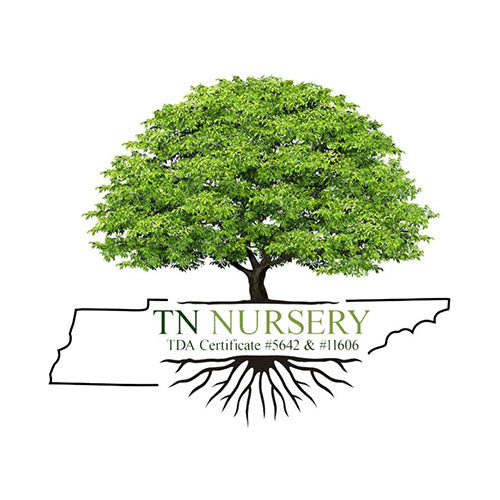How Fall Planting Boosts Root Development
Fall planting is a time-honored practice that gardeners and horticulturists have employed for generations. While many associate spring with the ideal planting season, fall offers a unique opportunity to boost root development and ensure the long-term success of your plants. In this article, we will dive into the advantages of fall planting and the science behind how it fosters robust root systems, setting the stage for healthier and more vibrant plants in the coming seasons.
Cooler Temperatures
One of the primary advantages of fall planting is the cooler weather that comes with the season. As summer wanes and temperatures drop, plants experience less stress and are better equipped to establish their roots. High temperatures and scorching sun can harm young plants, causing stress and evaporation of precious moisture. Fall's milder temperatures provide a more hospitable environment for root development, allowing plants to grow without the added pressure of extreme heat.
Moisture Availability
In many regions, fall brings increased rainfall, a valuable resource for newly planted specimens. The moisture-rich soil helps plants establish their root systems more efficiently. Additionally, the reduced evaporation rate during the cooler months means water remains in the ground longer, ensuring consistent hydration for developing roots.
Less Competition
Fall planting also benefits from reduced competition from weeds and other fast-growing plants. Many weeds become less active as temperatures drop, allowing newly planted specimens to access nutrients and water without competing for resources. This gives your plants a head start in establishing their roots and thriving.
Soil Conditions
The soil's warmth during the fall is essential to root development. The ground retains heat from summer, providing a conducive environment for root growth even as air temperatures drop. As a result, roots continue to grow until the ground freezes, ensuring the plant is well-rooted before winter dormancy.
Root Development
Root Growth vs. Top Growth Plants allocate a limited amount of energy between root growth and top growth (above-ground growth). In the spring and early summer, the emphasis is on top growth, as the plant needs to develop leaves, stems, and flowers to capture sunlight for photosynthesis. However, in the fall, the Focus shifts towards root development. As days shorten and temperatures decrease, the demand for top growth decreases, allowing the plant to invest more energy and resources in root expansion.
Hormonal Changes
Plants produce growth-regulating hormones, with two essential hormones, auxins and cytokinin's, playing a significant role in root development. In the fall, the plant undergoes hormonal changes that promote root growth. Auxins, which encourage root growth, become more dominant, while cytokinin's, which promote top growth, become less active. This hormonal balance shift directs the plant's energy toward root development, helping it establish a robust foundation for future growth.
Reduced Stress
Summer planting often exposes young plants to high temperatures and water scarcity. These conditions can hinder root development as the plant diverts resources to cope with the stress. In contrast, fall's cooler, more stable conditions reduce the stress on the plant, allowing it to allocate more resources to root growth. Less stress means healthier and more resilient roots.
Overwintering
Fall planting sets the stage for overwintering success. A well-developed root system is essential for a plant's ability to survive harsh winter conditions. Strong roots anchor the plant securely in the soil, preventing it from being uprooted by strong winds or heavy snow. A healthy root system also helps the plant access water and nutrients during dormancy periods when top growth is minimal.
Choosing the Correct Plants
It's important to note that not all plants are suitable for planting in the fall. Focus on cold-hardy varieties that can withstand winter temperatures in your region. Trees, shrubs, and perennials are excellent candidates for fall planting.
Timing Matters
The ideal time for fall planting depends on your location. In most regions, late summer to early fall (late August to early October) is the best window for planting. This allows plants to establish roots before the first hard frost.
Prepare the Soil
Prepare the planting site by amending the soil's structure and adding compost or organic matter and fertility. Well-draining soil is crucial to prevent waterlogging, which can damage developing roots.
Water Adequately
Although fall brings increased rainfall, monitoring soil moisture and providing supplemental watering is essential if necessary. Adequate water is crucial for root development.
Mulch
After planting, adding a layer of mulch around the base of the plants is recommended to help retain moisture, keep the soil temperature regulated, and prevent weed growth specimens to help conserve water regulate soil temperature, and deter weeds.
Protect from Wildlife
Consider using protective measures like fencing or netting to prevent wildlife from damaging newly planted specimens, especially if you live in an area with a high population of deer or other herbivores.
Fall planting is a tried-and-true method for promoting robust root development and ensuring the long-term success of your plants. The combination of cooler temperatures, increased moisture availability, reduced competition, and hormonal changes in the plant make fall an optimal time for root growth. By understanding the science behind fall root development and following best practices for fall planting, you can create a thriving garden filled with healthy, vibrant plants that flourish for years. So, embrace the autumn season and watch your garden's roots grow deep and robust, laying the foundation for a beautiful and thriving landscape.
